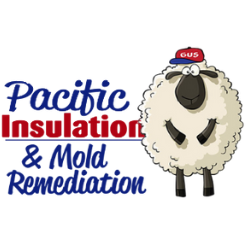Comprehensive Home Inspections for Air Quality, Energy Loss & Moisture Issues
- Indoor air quality testing & analysis
- Mold-risk & humidity assessments
- Insulation performance evaluations
- Attic & crawlspace moisture diagnostics
- Thermal imaging energy inspections
- Radon Inspections & Mitigation
- Avista Rebate Eligibility
We'll Call and Confirm the Inspection within 24 Hours of Online Scheduling
Members of the Indoor Air Quality Association - Licensed & Certified IAQ Inspectors
Air Quality, Energy Efficiency & Moisture Inspections
Identify hidden air quality issues, energy loss, and moisture problems before they
damage your home or health.
Serving Spokane, Spokane Valley, Mead, Deer Park & North Idaho
Certified Data-Driven Inspection-First Approach
Indoor Air Quality is Usually Worse
than Outdoor Air
Even in Spokane—where outdoor air is relatively clean—indoor air is often 2 to 5 times more polluted. That’s because homes are built tighter for energy efficiency, so whatever gets inside tends to stay inside.
Why That Matters
Your home doesn’t pull air from outside like people think.
It pulls air from the attic, crawlspace, and wall cavities—areas that often contain:
- Moisture
- Dust and insulation fibers
- Mold spores
- Stale, contaminated air
If there’s a moisture issue or insulation problem, it directly affects what you’re breathing.
The Energy Efficiency Connection
When a home leaks energy, it also leaks air.
When a home is tightened without a plan, air quality can actually get worse.
That’s why we don’t guess or upsell—we measure:
- Air quality
- Moisture levels
- Thermal and insulation performance
This tells us why there’s an issue and what actually fixes it.
Why We Inspect First
If we don’t measure first, we’re just guessing—and guessing is expensive.
An inspection lets us:
- Identify moisture sources before mold forms
- Find insulation failures causing energy loss
- Improve air quality without trapping pollutants
Most problems don’t need drastic fixes—they just need the right fix.
Telltale Signs Of
Heat Loss
Icicles or Ice Dams Along the Eaves
Pretty to look at, but a nightmare underneath — they form when attic heat melts snow that refreezes at the edges, trapping moisture under shingles.
Exposed Roof Lines or Hot Spots in Frost
On frosty mornings, look for bare patches where frost melts first. That’s heat bleeding out of your attic like a slow leak in your wallet.
Sagging Roof Deck or Wavy Shingles
Inconsistent attic temperatures and moisture buildup warp materials over time. It’s insulation failure aging your roof early.
Condensation on Soffit Vents or Fascia
If you see moisture beads or mildew near the eaves, it’s a sure sign of trapped humidity from an unbalanced attic environment.
Dark or Discolored Roof Streaks
Heat loss changes the roof’s surface temperature, creating streaks or uneven shading where moisture and algae thrive.
Rust on Roof Nails Under the Eaves
Moisture condensing near the roof edge means warm, damp attic air is reaching the cold roof deck — another insulation and ventilation fail.
High Energy Bills Without a Weather Reason
Okay, you can’t “see” this one — but if you’re paying more and the weather hasn’t changed, odds are your roof is radiating dollars skyward.
Air Quality, Energy Efficiency & Moisture Inspection Reports
Our detailed inspection reports don’t just show you pictures — they show you proof. Using advanced FLIR infrared cameras and precision moisture meters, we create a clear visual map of your home’s energy performance and moisture health. Every report identifies hidden air leaks, missing insulation, temperature gaps, and moisture intrusion before they become costly repairs.
Each inspection includes side-by-side thermal and visible images, temperature readings, and documented moisture levels — giving you solid data to act on, not guesses. We outline the severity of each issue, from minor drafts to critical water damage, along with clear, prioritized recommendations for repairs or upgrades.
Whether you’re verifying an Insulation project, investigating Mold risk, inspecting for Radon or preparing for an Avista Rebate inspection, our reports provide the documentation and evidence you need.
Trusted by homeowners across Spokane, Coeur d’Alene, and Eastern Washington, Pacific Insulation & Mold Remediation delivers licensed, bonded, and insured service backed by 100+ five-star reviews.
Protect your investment, lower your energy bills, and prevent future damage — schedule your indoor air quality, thermal imaging and moisture inspection today.
Customer Reviews
Insulation Rebates
Avista Home Insulation Program
The 2025 Insulation Rebates have just been released! Attic, Wall and Crawl Space insulation rebates will all be $1.75 per square foot with some stipulations for eligibility and must be installed by an Authorized Avista Home Insulation Trade Ally.
Inland Power
Insulation Rebates for Inland Power customers are $.75 cents per square foot. Please download and read both the Weatherization Specifications Agreement and the Rebate form. https://www.inlandpower.com/insulation
Modern Electric
Insulation Rebates for Modern Electric customers are up to $2.30 per square foot. Please download and read both the Weatherization Specifications Agreement and the Rebate form. https://www.directefficiency.com/modern-residential-insulation-rebate-application/
Vera Water & Power
Insulation Rebates for Vera customers are up to $2.30 per square foot. Please download and read both the Weatherization Specifications Agreement and the Rebate form. https://verawaterandpower.com/residential-rebates-2/
Call Gus at 509-879-0495 to determine your eligibility.









